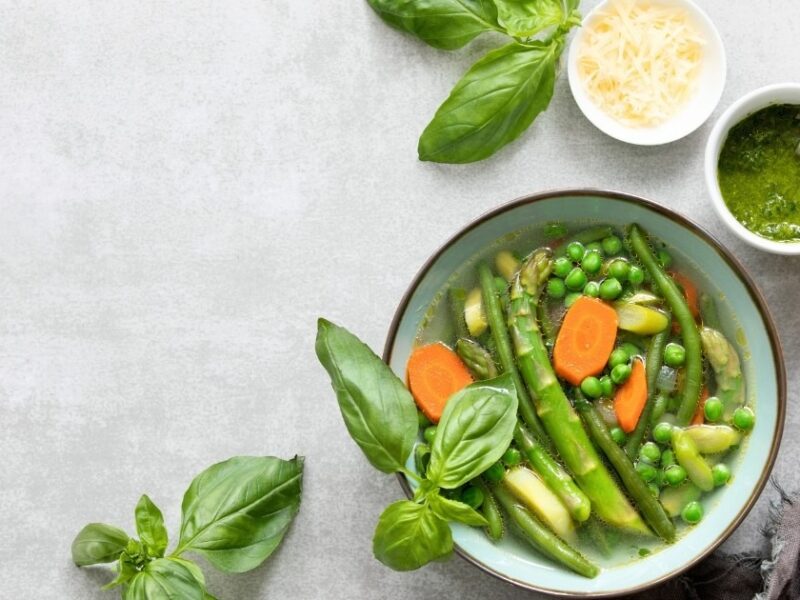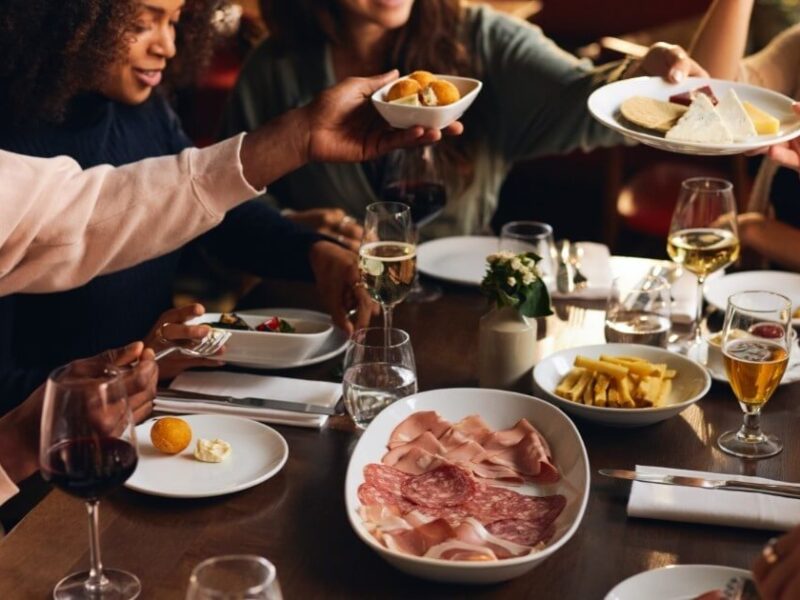
NYC Menu Engineering Tips to Stay Profitable in 2025
- What is Menu Engineering?
- Key Menu Engineering Strategies
- 1. Raising Prices Without Alienating Customers
- 2. Increasing Perceived Value
- 3. Profitability Analysis
- How to Calculate Food Cost per Serving
- How to Calculate Contribution Margin
- 4. Item Placement & Visual Design
- 5. Pricing Psychology
- 6. Portion Control & Ingredient Substitutes
- 7. Seasonal Limited-Time Offerings
- 8. Monitoring and Adjusting with POS Data
- 9. Competitor Analysis
In today’s volatile economic climate, restaurant owners face relentless pressure to maintain profitability. Rising food costs, inflation, and supply chain disruptions continue challenging the industry, forcing many businesses to rethink their pricing and menu strategies.
While some operators may be tempted to raise prices directly, menu engineering is a more strategic approach that can help maintain profitability without driving customers away.
This framework uses design, sales data, consumer psychology, and item optimization to create profitable menus that appeal to customers.
In this article, we’ll explore the critical menu engineering strategies that can help restaurants stay profitable amid increasing costs.
What is Menu Engineering?
As we discussed in our previous article, the rising inflation of the past few years has severely impacted restaurants. Businesses struggle to make ends meet due to continuous food cost rises. Many restaurant owners have been embracing menu engineering to help mitigate the effects of price hikes.
Menu engineering is rooted in behavioral psychology, focusing on how design, pricing, and item placement influence buying decisions. This science-backed approach helps restaurants navigate rising costs without sacrificing quality or customer experience.
One of the key tools used in this process is the Menu Engineering Matrix, which classifies menu items into four categories:
- Stars: High-profit, high-popularity items that should be prominently featured.
- Plowhorses: Popular but less profitable dishes, which may need reworking or repricing.
- Puzzles: High margin but less popular items that require better marketing or visibility.
- Dogs: Low-profit, low-popularity items that may be candidates for removal.
Understanding this matrix is the first step in effectively engineering a menu, but restaurants can use other key strategies to promote suitable dishes and sustain customer engagement.
Key Menu Engineering Strategies
1. Raising Prices Without Alienating Customers
While price hikes might be inevitable, explaining the whys and hows of your menu price rises is crucial. Being transparent about the reasons behind the increased prices can help your customers accept them more easily.
Another way to prevent customer pushback is gradually raising prices in small increments. Pairing these price increases with value additions, such as new ingredients, larger portions, or unique offerings, can also help justify the added cost.
Restaurants that emphasize quality and improvements while keeping customers informed are more likely to retain loyalty despite price adjustments.
2. Increasing Perceived Value
Customers don’t just buy food—they buy an experience. The psychology behind perceived value can work in your favor. One effective method is using premium language in menu descriptions. Describing a dish as “locally sourced, slow-roasted chicken” elevates its appeal more than simply calling it “roasted chicken.”
You can also offer combo deals or prix fixe menus that give customers the impression they are getting more for their money while ensuring the items included have good profit margins.
3. Profitability Analysis
Accurately calculating food costs per serving is critical for maintaining profitability. Every ingredient in a dish, from main components to garnishes, must be considered.
How to Calculate Food Cost per Serving
To calculate the food cost per serving, list all ingredients used in the dish, the portion size, and the cost for each. Here’s an example using a creamy fettuccine Alfredo:
- You purchase a 5-pound bag of fettuccine pasta for $12.
- Each serving uses 6 ounces of pasta, which equals $0.90 per serving.
Perform this calculation for all ingredients in the dish:
- 6 ounces of fettuccine pasta = $0.90
- 1/2 cup of heavy cream = $0.50
- 1/4 cup of grated Parmesan cheese = $1.00
- 1 tablespoon of butter = $0.20
- 1 garlic clove = $0.10
Adding these up, the total food cost per serving for a fettuccine Alfredo dish is $2.70.
How to Calculate Contribution Margin
The contribution margin shows the profit from each menu item, calculated by subtracting the food cost per serving from the selling price.
For example, if the menu price of the fettuccine Alfredo is $16.00, the calculation is:
The contribution margin for each serving of fettuccine Alfredo is $13.30—the restaurant’s profit on each plate sold. This analysis helps operators decide which dishes to promote or reprice based on their profitability.
4. Item Placement & Visual Design
Menu design can be a powerful tool to influence customer choices. Consider “the golden triangle” when choosing a place for your best-performing dishes. When opening a menu, customers look at the middle of the page, then the top-right and top-left corners. These are the prime spots to feature profitable dishes.
Using visual cues like boxes, bold fonts, or icons to highlight these dishes can increase sales. Remember to keep it simple: avoid long menus with excessive details and graphics.
5. Pricing Psychology
Techniques like charm pricing—where items are priced at $9.99 instead of $10—are proven to make dishes feel less expensive. However, exclusive establishments tend to use round numbers.
Removing currency symbols ($) from menus can also reduce the focus on the price, making customers more likely to order based on description rather than cost.
6. Portion Control & Ingredient Substitutes
Another essential strategy is optimizing portion sizes. By standardizing portions, restaurants can minimize food waste and maintain consistency while satisfying customers.
Consider using substitutes and swapping expensive ingredients for more affordable but equally flavorful options.
7. Seasonal & Limited-Time Offerings
Seasonal ingredients are fresher, more abundant, and less expensive, making them ideal for seasonal menu items. Seasonal menus keep offerings exciting and allow restaurants to capitalize on lower ingredient costs when specific products are in season.
Offering limited-time dishes can create urgency and encourage customers to try new items while promoting high-margin seasonal ingredients.
8. Monitoring and Adjusting with POS Data
Your Point-of-Sale (POS) system can be a powerful analytical tool for menu engineering. By tracking the performance of each menu item, restaurants can identify which dishes are top sellers and which may need to be reworked or removed.
POS data provides insight into customer preferences, allowing restaurants to adjust prices, portions, or ingredients based on real-time data.
9. Competitor Analysis
Conducting a competitor analysis of pricing, portion sizes, and menu offerings will give you insight into market trends. This allows you to fine-tune your menu strategies, so you aren’t underpricing or overpricing dishes relative to the competition. You can also identify potential niches that your restaurant could fill, offering unique dishes that set you apart.
Regardless of what you offer on your menu, it is essential to keep analyzing food expenses, tweaking pricing, and designing menus strategically. Using seasonal ingredients, portion control, and POS data are powerful tools to help manage costs.
Partnering with Valley View Produce simplifies this process while giving you access to competitively priced wholesale ingredients and flexible ordering options. From fresh local and global seasonal produce to pantry staples and kitchen essentials, we’re your go-to New York wholesale supplier for your every need.








